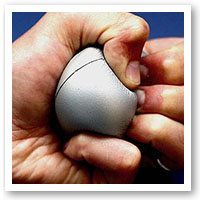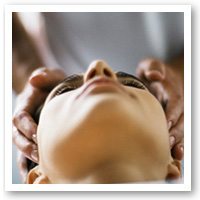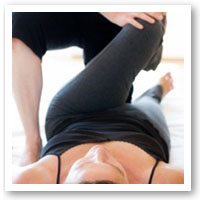Stress and your body, part 2.
 Now, after reading Part 1 in last months newsletter, you may have a better understanding of how readily our body reacts and changes in response to stress. These changes will often occur without us having any awareness of them, but there are many other changes that occur that that we can feel. Many patients present to me with various aches and pains, that very often have an underlying cause of stress. When we are dealing with stress our body reacts in certain predictable ways. There are 3 muscles that will always tighten in response to stress. They are your diaphragm, your upper Trapezius and your Suboccipital muscles.
Now, after reading Part 1 in last months newsletter, you may have a better understanding of how readily our body reacts and changes in response to stress. These changes will often occur without us having any awareness of them, but there are many other changes that occur that that we can feel. Many patients present to me with various aches and pains, that very often have an underlying cause of stress. When we are dealing with stress our body reacts in certain predictable ways. There are 3 muscles that will always tighten in response to stress. They are your diaphragm, your upper Trapezius and your Suboccipital muscles.
Your diaphragm is a sheet of muscle that sits like a dome and divides your internal body in half. It sits below your lungs and heart and above the rest of your organs, and is important in breathing as it moves down to help your lungs draw breath in and up to help push air out of your lungs. When it is tight it is not able to move down and this results in feeling short of breath. As it is attached to structures on the inside around the level of the lower ribs, any tightening of the diaphragm can pull on these structures and often create a twist in that area. This can result in pain in the back, along the spine, around the ribs, and sometimes even pain on breathing.
The upper Trapezius muscle sits across the top of your shoulders and up into the lower neck, as it tightens it will pull the shoulders up and pulls the neck down into the shoulders. This affects your posture and will create discomfort in your shoulders, between your shoulder blades and also your neck. It can also cause a pinching of the nerves in your neck resulting in numbness or a tingling or pins and needles sensation in your hands or fingers.
The Suboccipital muscles are short muscles that join the back of your skull to the upper neck. Any tightness in these muscles will cause your head to tilt back. They can give you pain in the upper neck and in the back of the skull. Tightness in these muscles together with the Trapezius muscles creates poor posture and stiffness running from the skull to your shoulder blades, resulting in neck and shoulder pain as well as headaches. Sustained tightness and resulting poor posture in this area can often result in achiness in your upper arm.
Another common reaction to stress is clenching or grinding your teeth. Apart from this being damaging to your teeth, it causes very tight jaw muscles. This in itself can give you pain around the jaw which can feel like a headache. These tight muscles will also affect the upper neck and temples due to where they attach, and cause neck pain and stiffness and headaches.
Stress is a part of every persons life, and it can be positive, such as it being a motivator, but it can also cause problems. Just like everything in life there needs to be balance for there to be health and wellness. Stress can be balanced by exercise and relaxation, so it is important to find forms of exercise and relaxation that work for you, and incorporate that into your daily life.

 Cellulite – many women (if not all) of us have it and are not particularly fond of it. There are simple steps you can take to improve your blood circulation and lymphatic circulation which in turn will help to move on the fatty deposits which cause cellulite and that “orange peel” appearance.
Cellulite – many women (if not all) of us have it and are not particularly fond of it. There are simple steps you can take to improve your blood circulation and lymphatic circulation which in turn will help to move on the fatty deposits which cause cellulite and that “orange peel” appearance. Like all modern healthcare, Chiropractic techniques are constantly changing with the times. Just as your GP no longer applies leeches to you, Chiropractors have updates their techniques for improved results and experiences. Here are some common myths debunked…
Like all modern healthcare, Chiropractic techniques are constantly changing with the times. Just as your GP no longer applies leeches to you, Chiropractors have updates their techniques for improved results and experiences. Here are some common myths debunked… It’s that time of year again. The days are getting longer (slowly), we are beginning to look forward to summer and we are becoming more motivated to get out and exercise. For some of us that means signing up for one of the many fun runs, half marathons or maybe even marathons that are held in Sydney over the next 6 months. Running is great for your fitness and for weight loss, but it can be hard on your body, especially if you haven’t done much of it in the past few months.
It’s that time of year again. The days are getting longer (slowly), we are beginning to look forward to summer and we are becoming more motivated to get out and exercise. For some of us that means signing up for one of the many fun runs, half marathons or maybe even marathons that are held in Sydney over the next 6 months. Running is great for your fitness and for weight loss, but it can be hard on your body, especially if you haven’t done much of it in the past few months. Delivery assistance, natural birthing, drug-free birthing, low back pain, sciatic pain or pain down the leg, baby in breach position, balance and coordination, hormonal balance.
Delivery assistance, natural birthing, drug-free birthing, low back pain, sciatic pain or pain down the leg, baby in breach position, balance and coordination, hormonal balance. In clinic, we see patients with many and varied symptoms and conditions, but when it comes to working out the root cause of these conditions, often stress features in a big way.
In clinic, we see patients with many and varied symptoms and conditions, but when it comes to working out the root cause of these conditions, often stress features in a big way.
 Choosing a chiropractor is an important decision. A chiropractor helps to improve your health by looking at your spine and nervous system and their relationship to the rest of the body. Before putting yourself in the hands of a chiropractor there are some things you should consider:
Choosing a chiropractor is an important decision. A chiropractor helps to improve your health by looking at your spine and nervous system and their relationship to the rest of the body. Before putting yourself in the hands of a chiropractor there are some things you should consider: The back or spinal column is the central support structure of the body, and is therefore crucial to our functioning ñ most especially our mobility. The nerves that radiate out from the spinal cord are essential to the operation of every muscle, nerve and organ in the body ñ so if they become trapped or pinched in any way, they can affect our posture and movement significantly. This is often what happens when the discs that cushion the spinal column become worn or rupture. Other sources of back pain involve injury or strains to the muscles of the back ñ often from unusual movements or over stretching. Lifting and carrying with poor techniques also places strain on back muscles, especially if the knees are not bent, and the back ends up taking all the stress. Typical symptoms of a back problem include headaches, localised pain in the neck or back which may radiate to the shoulders, arms or legs. Chiropractic treatment is a popular alternative to invasive surgery or conventional medication, and is a recognised profession by the medical establishment.
The back or spinal column is the central support structure of the body, and is therefore crucial to our functioning ñ most especially our mobility. The nerves that radiate out from the spinal cord are essential to the operation of every muscle, nerve and organ in the body ñ so if they become trapped or pinched in any way, they can affect our posture and movement significantly. This is often what happens when the discs that cushion the spinal column become worn or rupture. Other sources of back pain involve injury or strains to the muscles of the back ñ often from unusual movements or over stretching. Lifting and carrying with poor techniques also places strain on back muscles, especially if the knees are not bent, and the back ends up taking all the stress. Typical symptoms of a back problem include headaches, localised pain in the neck or back which may radiate to the shoulders, arms or legs. Chiropractic treatment is a popular alternative to invasive surgery or conventional medication, and is a recognised profession by the medical establishment.